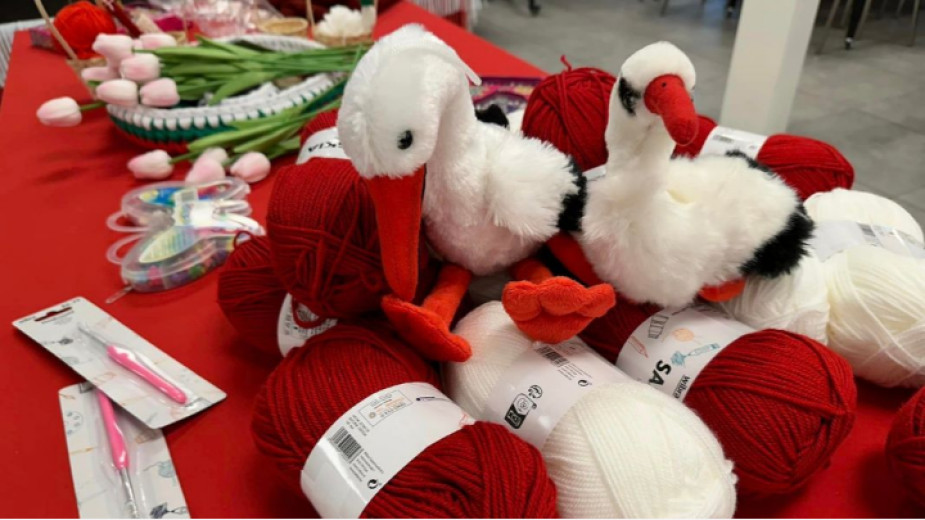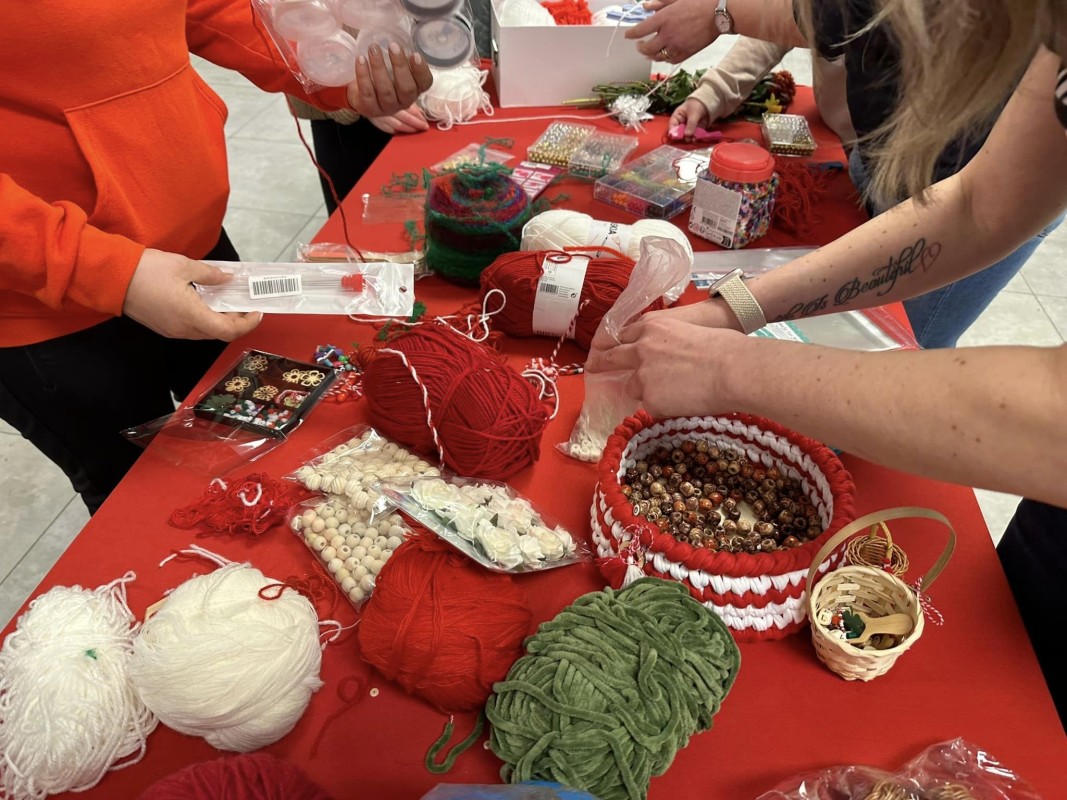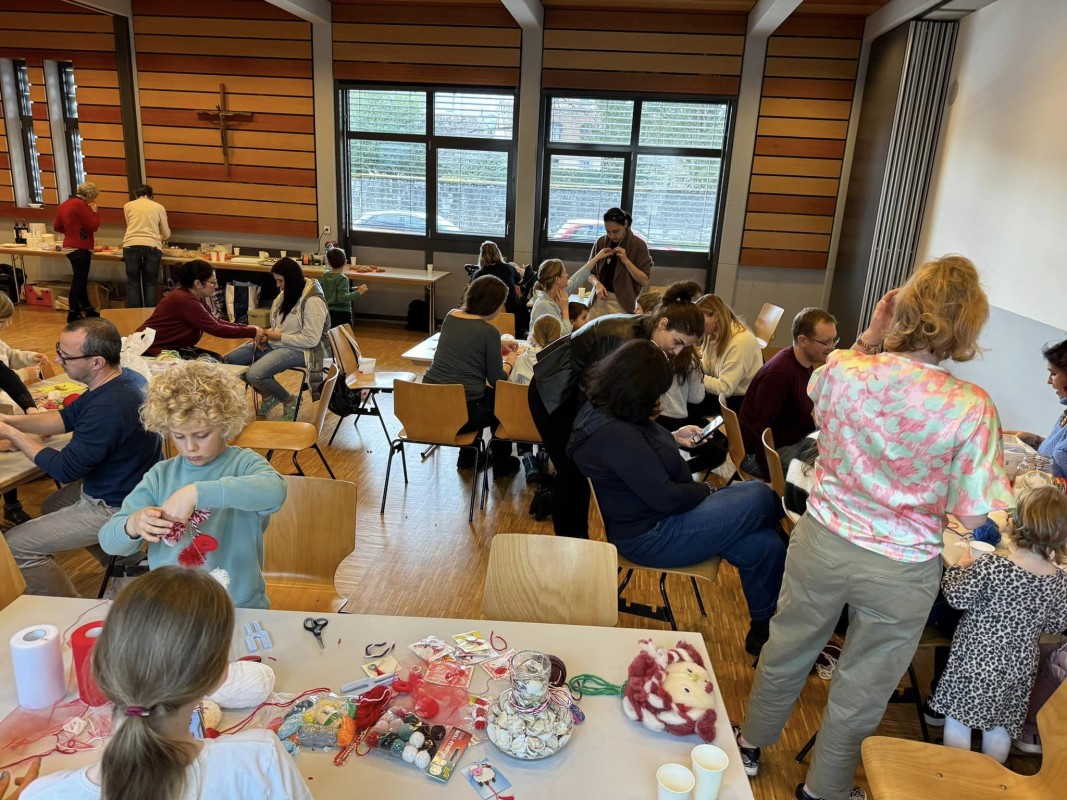 10
10
Wearing the ornament made of red-and-white intertwined thread called martenitsa on the first day of March is one of the most viable traditions Bulgarians share, no matter where they may be living on the planet. This is one of the reasons why martenitsas have been on the UNESCO intangible cultural heritage list since 2017.
The flurry of activity for making martenitsas starts in February. With lots of enthusiasm and creative ideas, the Bulgarian children from the Bulgarian Sunday schools abroad (almost 400 in number in 43 countries of 6 continents) have also been making martenitsas. 
At the Bulgarian Sunday school Vasil Levski in the Hague, the March workshop opened doors on 18 February. Making martenitsas is a magical time, bringing together different generations who find out about Bulgarian traditions, the school says. That is why it also invited the parents of the children to join in the martenitsa-making process.

A week later, on 24 February, 30 Bulgarian children in Switzerland made their martenitsas, says the Bulgarian-Swiss Association of Culture, Traditions and Education Kanatitsa.
“It brings tears to the eyes to remember the times when we, as children, made our own martenitsas, and now we are seeing our children doing the same. The children from the Bulgarian school made traditional martenitsas out of wool, yarn and other natural materials. We would like to thank all Bulgarian families from Montreux, Vevey, Lausanne and Bern who made the event so fulfilling. 
The workshop took place with the assistance of the Bulgarian Ministry of Education and Culture.”
The children from the Bulgarian school Golden Age in Nurnberg really enjoyed making the red-and-white good luck charms, and this was the result:
The kids from the preparatory group at the Bulgarian school Zvunche in Surbiton, London extend wishes for health and happiness in every Bulgarian home. For their families, they made postcards with Bulgarian embroidery, martenitsas, and a gold coin for good luck.
“Martenitsas are one of the oldest and best-loved Bulgarian symbols, which have become an indispensable element of our national culture. 
Bulgarian embroidery is an art, with the whisperings of the soul at its heart. /…/ Any genuine art goes far beyond material things to catch the threads of life, and bundle them together into a slim knot of goodness, love and time,” the school writes on Facebook.
Martenitsa workshops took place across the US as well
One location where martenitsas were made was the First Bulgarian School Vasil Levski in Las Vegas. The children, most of them aged 3-5, were eager to show off their beautiful martenitsas to Radio Bulgaria’s reporter on location Maria Samichkova. They also told her why it is important to wear martenitsas, what the red and the white threat stand for, and wished each other and everyone else lots of health and luck.
The Bulgarian school Roden Krai, set up in New Jersey in 2017, also organized martenitsa-making sessions for its children, who made colourful martenitsas with beads, different coloured yarn, pom-poms, and even martenitsa postcards. 
Bulgarians made their martenitsas in the windy city, where it is thought the biggest Bulgarian community in the US lives. For the 6th year in a row, the Bulgarian-American Association in Chicago carried out their “Martenitsa Tree” project, which aims to help form a positive image of Bulgaria, connected with the country’s culture and its traditions. 
The martenitsa tree is a wonderful way to promote Bulgaria in the very centre of Chicago, and is a side event for Bulgaria’s national day on 3 March. 
More:
By Yoan Kolev and Maria Samichkova
Translated and posted by Milena Daynova
Photos: Maria Samichkova, Sunday school Vasil Levski in the Hague, Bulgarian-Swiss Association of Culture, Traditions and Education Kanatitsa, Bulgarian school Golden Age in Nurnberg, Bulgarian school Zvunche, Surbiton, London, Bulgarian school Roden Krai, New Jersey, Bulgarian-American Association in Chicago
The picturesque town of Elena is located in the middle part of the Balkan Mountains, the so-called Elenski Balkan arae, about 40 km from the medieval capital of Bulgaria - the town of Veliko Tarnovo. It is a must-see for those lovers of Bulgarian..
Immerse yourself in the history, architecture and natural beauties of Bulgaria with the miniatures in the open-air museum "Park Mini Bulgaria" in the town of Veliko Tarnovo - a wonderful opportunity to admire the achievements of our ancestors and..
Less than two hours drive northwest of Sofia, one finds oneself in the timeless nature of Vrachanski Balkan. Lush greenery, picturesque rocky crags, and a lot of history can be found in the piece of land "locked" between the Cherepish..

+359 2 9336 661
